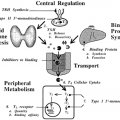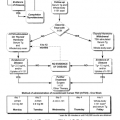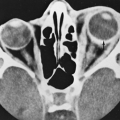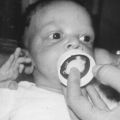SECTIONAL THYROID IMAGING
Sectional imaging, which includes CT and MRI, is used to depict the regional anatomy of the neck and the superior mediastinum, but it plays no role in the diagnosis of the patient with a solitary thyroid nodule or goiter.17,18 and 19 Nevertheless, when these tests are done for other indications, the asymptomatic and unsuspected thyroid lesions that are often revealed need to be managed.
As is shown in Table 35-1, however, some circumstances exist for which these imaging techniques are the only means available for the proper clinical evaluation of patients. In selected instances, sectional imaging may be used to assess the extent of an unusually large or obstructive thyroid gland or nodule, a cancer (Fig. 35-11), or a substernal goiter (Fig. 35-12), especially before surgery. Furthermore, when the postsurgical clinical findings are confusing, sectional imaging can provide accurate and essential management information. A detailed knowledge of the regional anatomy and experience with the techniques are required for the optimal interpretation of the images. Consultation between the clinician and the radiologist is important in this situation, as with all other imaging methods. Although the early identification of a recurrence of a tumor using this technique is possible, sonography is more sensitive for small lesions, less costly, more convenient, and safer. The periodic repetition of sectional imaging as a screening tool is rarely warranted.17,19,20
Stay updated, free articles. Join our Telegram channel

Full access? Get Clinical Tree







